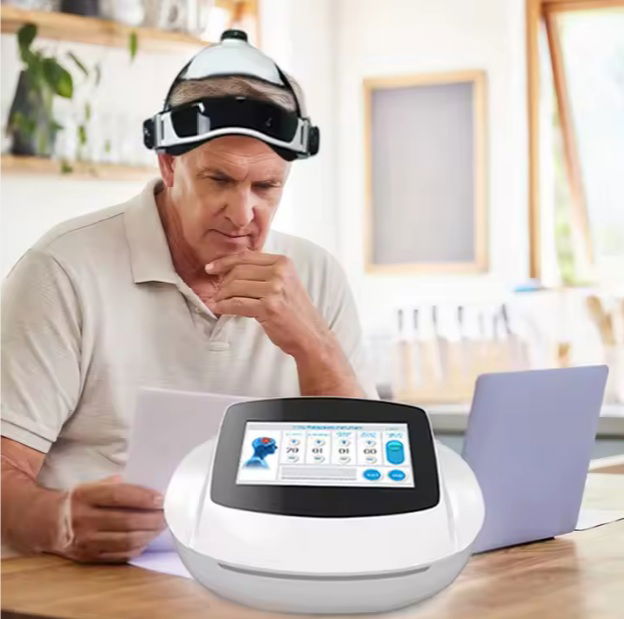Was ist rTMS? | Repetitive transkranielle Magnetstimulation | Albufeira, Algarve

Repetitive transkranielle Magnetstimulation (rTMS) verstehen: Mechanismen und klinische Anwendungen
Die repetitive transkranielle Magnetstimulation (rTMS) ist eine nicht-invasive Neuromodulationstechnik, die elektromagnetische Felder nutzt, um die neuronale Aktivität in bestimmten Hirnarealen zu beeinflussen. Aufgrund ihres Sicherheitsprofils, ihres nicht-invasiven Charakters und zunehmender Wirksamkeitsnachweise bei einer Reihe neuropsychiatrischer und neurologischer Erkrankungen gewinnt sie in der Neurowissenschaft und der klinischen Medizin zunehmend an Bedeutung.
Wirkmechanismus
rTMS funktioniert durch die Erzeugung eines sich schnell verändernden Magnetfelds durch eine auf der Kopfhaut platzierte Spule. Dieses Feld durchdringt den Schädel und induziert durch elektromagnetische Induktion elektrische Ströme in den darunterliegenden kortikalen Neuronen, wie es das Faradaysche Gesetz beschreibt. Abhängig von Frequenz, Intensität und Stimulationsmuster kann rTMS die kortikale Erregbarkeit entweder durch Erhöhung oder Verringerung der neuronalen Feuerungsrate modulieren.
Niederfrequente rTMS (≤1 Hz) induziert im Allgemeinen hemmende Effekte, indem sie die kortikale Erregbarkeit reduziert. Sie wird verwendet, um hyperaktive Hirnareale herunterzuregulieren, beispielsweise bei Erkrankungen wie akustischen Halluzinationen oder dem Tourette-Syndrom.
Hochfrequente rTMS (≥5 Hz) hingegen erhöht tendenziell die kortikale Erregbarkeit. Dies ist nützlich bei Erkrankungen, die mit verminderter Gehirnaktivität einhergehen, wie z. B. einer schweren depressiven Störung oder einer schlaganfallbedingten motorischen Beeinträchtigung.
Darüber hinaus ahmen neuere strukturierte Protokolle wie die Theta-Burst-Stimulation (TBS) endogene Gehirnrhythmen nach und können bei kürzerer Behandlungsdauer eine längere synaptische Plastizität (langfristige Potenzierung oder Depression) herbeiführen.
Neurophysiologische und zelluläre Effekte
Die durch rTMS induzierten elektrischen Felder lösen Aktionspotentiale in kortikalen Neuronen aus. Wiederholte Stimulation kann zu dauerhaften Veränderungen der synaptischen Effizienz führen, ein Phänomen, das als Neuroplastizität bekannt ist. Auf zellulärer Ebene beeinflusst rTMS Neurotransmittersysteme wie Serotonin, Dopamin und Glutamat, verstärkt neurotrophe Faktoren wie den Brain-Derived Neurotrophic Factor (BDNF) und fördert die zerebrale Durchblutung und Angiogenese.
Darüber hinaus wurde gezeigt, dass rTMS die funktionelle Konnektivität zwischen Gehirnregionen verändert und so dazu beiträgt, eine ausgeglichene neuronale Netzwerkaktivität wiederherzustellen, insbesondere bei psychiatrischen Störungen wie Depressionen oder Zwangsstörungen (OCD).
Klinische Anwendungen
Die US-amerikanische Food and Drug Administration (FDA) und andere Aufsichtsbehörden haben rTMS für verschiedene Erkrankungen zugelassen: